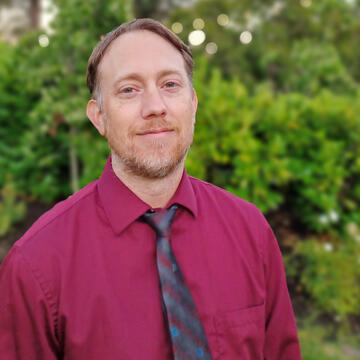
Robert Clements
Assistant Professor
Biography
Robert Clements is an assistant professor in the MS in Data Science and Artificial Intelligence program and the Director of the Center for AI and Data Ethics. He is interested in innovative and creative approaches to data science education and studying the societal impacts of AI and datafication. Prior to joining USF he had a nearly ten-year career in industry, holding several positions throughout the San Francisco Bay Area as a data scientist and data science manager/director, working primarily in developing machine learning models in different domains. He received a PhD in Statistics from UCLA in 2011 and, before beginning his industry career, was a postdoctoral researcher at the German Research Center for Geosciences in Potsdam, Germany, where he studied statistical seismology.
Expertise
- Machine Learning
- MLOps
- Applied Statistics
- AI and Data Ethics
Research Areas
- AI and Data Ethics
- Data Science Education
Education
- UCLA, PhD in Statistics, 2011
- UCLA, MS in Statistics, 2009
- Humboldt State University, BA in Mathematics, 2006
Prior Experience
- Senior Director of Data Science, Optum
- Data Scientist & Manager, Walmart Labs
- Data Scientist, UnitedHealthcare
- Data Scientist, GE Digital
- Data Scientist, Verisk Analytics
Selected Publications
- Clements RA, Schoenberg FP, and Schorlemmer D. 2011. Residual analysis methods for space-time point processes with applications to earthquake forecast models in California. Annals of Applied Statistics. 5 (4): 2549-2571.
- Clements RA, Schoenberg FP, and Veen A. 2012. Evaluation of space-time point process models using super-thinning. Environmetrics. 23: 606-616.
- Schneider M, Clements RA, Schorlemmer D, and Rhoades D. 2014. Likelihood- and Residual-Based Evaluation of Medium-Term Earthquake Forecast Models for California. Geophysical Journal International. 198 (3): 1307-1318.
- Gordon SJ, Clements RA, Schoenberg FP, Schorlemmer D. 2015. Voronoi residuals and other residual analyses applied to CSEP earthquake forecasts. Spatial Statistics. 14B: 133-150.
- Mak S, Clements RA, and Schorlemmer D. 2017. Empirical Evaluation of Hierarchical Ground Motion Models: Score Uncertainty and Model Weighting. Bulletin of the Seismological Society of America. 107(2): 949-965.